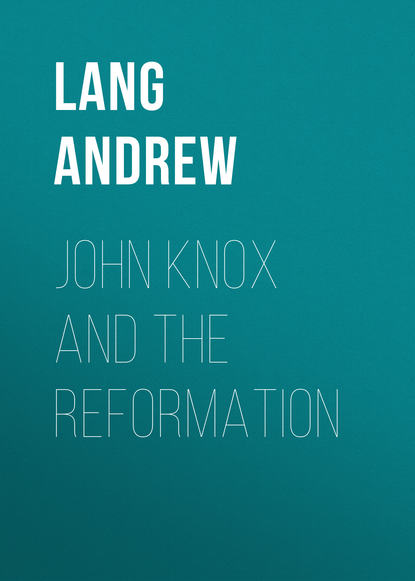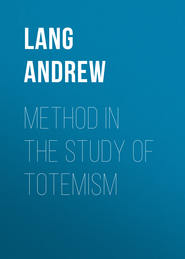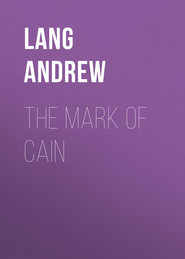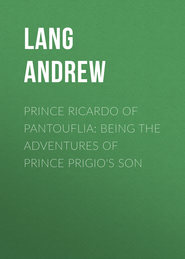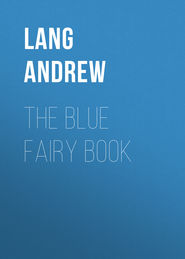По всем вопросам обращайтесь на: info@litportal.ru
(©) 2003-2024.
✖
John Knox and the Reformation
Настройки чтения
Размер шрифта
Высота строк
Поля
Knox, ii. 15-38.
176
Ibid., vi. 56-59.
177
S. P. Scotland, Elizabeth, MS. vol. i. No. 80; cf. Bain, i. 236, 237. Croft to Cecil, Berwick, August 3, 1559.
178
For. Cal. Eliz., 470.
179
I assume that he was the preacher at Edinburgh in d’Oysel’s letter of June 30-July 2, 1559. Teulet, i. 325.
180
Sadleir to Cecil, September 8, 1559. For. Cal. Eliz., 543, 1558-1559. The fortification, says Professor Hume Brown, “was a distinct breach of the late agreement” (of July 24), “and they weir not slow to remind her” (the Regent) “of her bad faith.” The agreement of July 24 says nothing about fortifying. The ingenious brethren argued that to fortify Leith entailed “oppression of our poor brethren, indwellers of the same.” Now the agreement forbade “oppression of any of the Congregation.” But the people of Leith had “rendered themselves” to the Regent on July 24, and the breach of treaty, if any, was “constructive.” (John Knox, ii. 47; Knox, i. 413, 424-433.)
181
The evidence as to these proceedings of the brethren is preserved in the French archives, and consists of testimonies given on oath in answer to inquiries made by Francis and Mary in November 1559.
182
We have dated Lethington’s desertion of the Regent about October 25, because Knox says it was a “few days before our first defeat” on the last day in October. M. Teulet dates in the beginning of October a Latin manifesto by the Congregation to all the princes of Christendom. This document is a long arraignment of the Regent’s policy; her very concessions as to religion are declared to be tricks, meant to bring the Protestant lords under the letter of the law. The paper may be thought to show the hand of Lethington, not of Knox. But, in point of fact, I incline to think that the real author of this manifesto was Cecil. He sketches it in a letter sent from the English Privy Council in November 15, 1559. This draft was to be used by the rebels in an appeal to Elizabeth.
183
Knox, vi, 89, 90; M‘Crie, 143.
184
Bothwell states the amount at 3000 écus de soleil. French Archives MS.
185
Knox, i. 472.
186
Sadleir to Cecil, Nov. 15, 1559. For. Cal. Eliz., 1559-60, 115.
187
Labanoff, vii. 283.
188
Knox, vi. 105-107.
189
See Appendix B.
190
Corp. Ref., xlv. 645 (3118, note I).
191
Calvinus Sturmio, Corp. Ref., xlvi. 38, 39, March 23, 1560. Sturmius Calvino, ibid., 53-56, April 15.
192
Bain, i. 389, 390; For. Cal. Eliz., 1559-60, 604.
193
Knox, ii. 68; cf. the Regent’s letter. Bain, i. 389.
194
The date may be part of an interpolation.
195
This account is from the French Archives MS., Angleterre, vol. xv.
196
Knox, ii. 72.
197
It is an inexplicable fact that, less than a month before Glencairn and Lord James signed the first godly Band (December 3, 1557), these two, with Kirkcaldy of Grange, “were acting with the Queen-Dowager against Huntly, Chatelherault, and Argyll,” who in December signed with them the godly Band. The case is thus stated by Mr. Tytler, perhaps too vigorously. It appears that, after the refusal of the Lords to cross Tweed and attack England, in the autumn of 1557, the Regent, with the concurrence of Glencairn, Lord James, and Kirkcaldy of Grange, proposed to recall from exile in England the Earl of Lennox, father of Darnley. He, like the chief of the Hamiltons, had a claim to the crown of Scotland, failing heirs born of Mary Stuart. Lennox, therefore, would be a counterpoise to Hamilton and his ally in mutiny, Argyll. Thus Lord James and Glencairn, in November 1557; support the Regent against the Hamiltons and Argyll, but in December Glencairn, reconciled to Argyll, signs with him the godly Band. We descry the old Stewart versus Hamilton feud in these proceedings.
198
Knox, ii. 87, note.
199
Knox, ii. 89-127.
200
176
Ibid., vi. 56-59.
177
S. P. Scotland, Elizabeth, MS. vol. i. No. 80; cf. Bain, i. 236, 237. Croft to Cecil, Berwick, August 3, 1559.
178
For. Cal. Eliz., 470.
179
I assume that he was the preacher at Edinburgh in d’Oysel’s letter of June 30-July 2, 1559. Teulet, i. 325.
180
Sadleir to Cecil, September 8, 1559. For. Cal. Eliz., 543, 1558-1559. The fortification, says Professor Hume Brown, “was a distinct breach of the late agreement” (of July 24), “and they weir not slow to remind her” (the Regent) “of her bad faith.” The agreement of July 24 says nothing about fortifying. The ingenious brethren argued that to fortify Leith entailed “oppression of our poor brethren, indwellers of the same.” Now the agreement forbade “oppression of any of the Congregation.” But the people of Leith had “rendered themselves” to the Regent on July 24, and the breach of treaty, if any, was “constructive.” (John Knox, ii. 47; Knox, i. 413, 424-433.)
181
The evidence as to these proceedings of the brethren is preserved in the French archives, and consists of testimonies given on oath in answer to inquiries made by Francis and Mary in November 1559.
182
We have dated Lethington’s desertion of the Regent about October 25, because Knox says it was a “few days before our first defeat” on the last day in October. M. Teulet dates in the beginning of October a Latin manifesto by the Congregation to all the princes of Christendom. This document is a long arraignment of the Regent’s policy; her very concessions as to religion are declared to be tricks, meant to bring the Protestant lords under the letter of the law. The paper may be thought to show the hand of Lethington, not of Knox. But, in point of fact, I incline to think that the real author of this manifesto was Cecil. He sketches it in a letter sent from the English Privy Council in November 15, 1559. This draft was to be used by the rebels in an appeal to Elizabeth.
183
Knox, vi, 89, 90; M‘Crie, 143.
184
Bothwell states the amount at 3000 écus de soleil. French Archives MS.
185
Knox, i. 472.
186
Sadleir to Cecil, Nov. 15, 1559. For. Cal. Eliz., 1559-60, 115.
187
Labanoff, vii. 283.
188
Knox, vi. 105-107.
189
See Appendix B.
190
Corp. Ref., xlv. 645 (3118, note I).
191
Calvinus Sturmio, Corp. Ref., xlvi. 38, 39, March 23, 1560. Sturmius Calvino, ibid., 53-56, April 15.
192
Bain, i. 389, 390; For. Cal. Eliz., 1559-60, 604.
193
Knox, ii. 68; cf. the Regent’s letter. Bain, i. 389.
194
The date may be part of an interpolation.
195
This account is from the French Archives MS., Angleterre, vol. xv.
196
Knox, ii. 72.
197
It is an inexplicable fact that, less than a month before Glencairn and Lord James signed the first godly Band (December 3, 1557), these two, with Kirkcaldy of Grange, “were acting with the Queen-Dowager against Huntly, Chatelherault, and Argyll,” who in December signed with them the godly Band. The case is thus stated by Mr. Tytler, perhaps too vigorously. It appears that, after the refusal of the Lords to cross Tweed and attack England, in the autumn of 1557, the Regent, with the concurrence of Glencairn, Lord James, and Kirkcaldy of Grange, proposed to recall from exile in England the Earl of Lennox, father of Darnley. He, like the chief of the Hamiltons, had a claim to the crown of Scotland, failing heirs born of Mary Stuart. Lennox, therefore, would be a counterpoise to Hamilton and his ally in mutiny, Argyll. Thus Lord James and Glencairn, in November 1557; support the Regent against the Hamiltons and Argyll, but in December Glencairn, reconciled to Argyll, signs with him the godly Band. We descry the old Stewart versus Hamilton feud in these proceedings.
198
Knox, ii. 87, note.
199
Knox, ii. 89-127.
200





